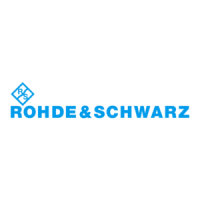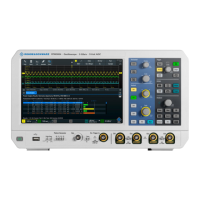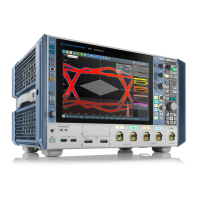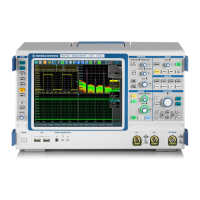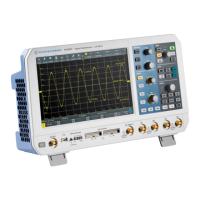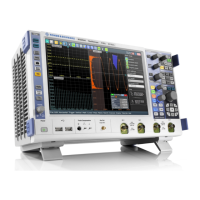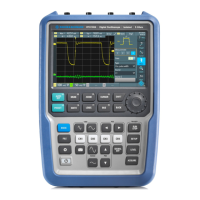Measurements
R&S
®
RTM20xx
78User Manual 1317.4726.02 ─ 01
6 Measurements
The following measurement methods are available:
●
CURSOR: Cursor measurements determine specific measurement results at the
current cursor positions of an active waveform; the results are displayed in a result
table.
●
QUICK MEAS: performs basic automatic measurements for the selected channel
immediately; the results are displayed directly at the waveform and in a result table.
●
MEAS: With automatic measurements, up to four amplitude and time measurements
or pulse counts can be configured and performed simultaneously; based on an active
channel, reference, or math waveforms. The results are displayed in a result table,
the color of the results corresponds with the source waveform color. These meas-
urements can be performed together with the "Quick Meas" measurements.
Use the full height of the screen for waveform display to get best vertical resolution and
measurement results.
6.1 Cursor Measurements
Using the CURSOR key you can determine specific measurement results at the current
cursor positions for various waveforms. The cursors can be set to the required position
with the Navigation rotary knob, or set to typical positions on a keypress.
You can measure on any active channel, math, or reference waveform, and also on the
resulting waveform of an FFT analysis and on XY-waveforms.
If MSO option R&S RTM-B1 is installed, active digital channels are available as mea-
surement sources for time and count cursor measurements, and the bit values of the
pods can be determined.
6.1.1 Cursor Measurements Types and Results
Cursor measurements are based on automatic measurements. The cursor measurement
is limited to the cursor positions or the part of the waveform between the cursors while
automatic measurements considers the complete display of the waveform. Thus you can
focus the measurement to the interesting part of the waveform by using cursors. The
results are displayed in the right part of the result table.
Cursor Measurements
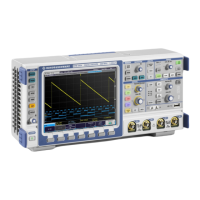
